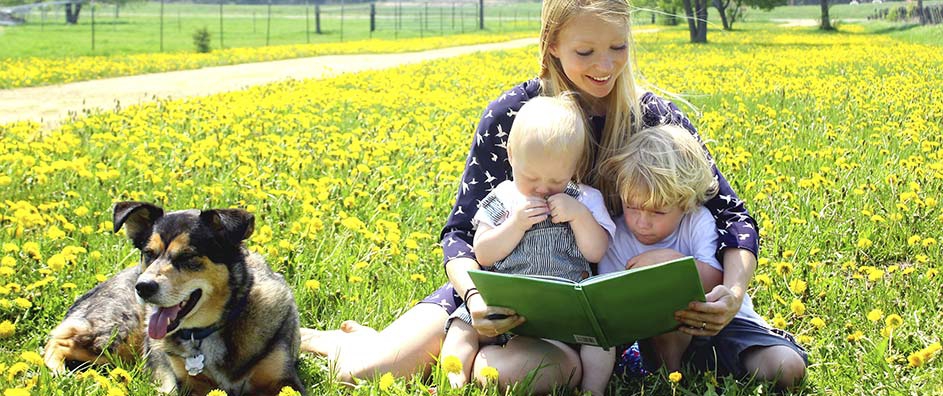The views expressed in our content reflect individual perspectives and do not represent the authoritative views of the Baha'i Faith.
All across human and religious history we’ve learned with the help of parables.
Parables express an abstract point with concrete examples. Used throughout the Holy Scriptures of most ancient faiths, parables reveal spiritual concepts by telling simple human stories. In Western culture, many people best know the parables in the Bible, especially the ones Jesus Christ tells in the gospels of the New Testament – including the stories of the Good Samaritan and the Prodigal Son.
 Those New Testament Biblical parables probably come from a long Jewish historical tradition that goes back to the Old Testament called mashalim. The old Hebrew prophets illustrated mashal stories in the Torah, the Talmud and the Midrash, designed to explain moral laws, maxims and ideas. Many people have heard the parable of the ewe and the lamb in second Samuel; or the symbolic stories in Ezekiel.
Those New Testament Biblical parables probably come from a long Jewish historical tradition that goes back to the Old Testament called mashalim. The old Hebrew prophets illustrated mashal stories in the Torah, the Talmud and the Midrash, designed to explain moral laws, maxims and ideas. Many people have heard the parable of the ewe and the lamb in second Samuel; or the symbolic stories in Ezekiel.
Islam has its share of parables, too. Many of the stories in the Qur’an impart values and moral lessons through parables, and in the mystical Sufi tradition of Islam, parables tell stories of love, beauty and mystery, relating them to the Sufi spiritual path.
Parables have their limits, though. The Baha’i teachings no longer use parables to teach spiritual lessons. Like children, who, when older, no longer need stories to understand, humanity too has evolved and can now comprehend rational explanations:
Whatever proceeded from the tongue of the Son was revealed in parables, whilst He Who proclaimeth the Truth in this Day speaketh without them. Take heed lest thou cling to the cord of idle fancy and withhold thyself from that which hath been ordained in the Kingdom of God, the Almighty, the All-Bountiful. – Baha’u’llah, The Summons of the Lord of Hosts, p. 62.
Just as adults learned complex spiritual concepts through parables in the past, children, with an immature capacity to understand moral lessons, often still learn through parables. Grimm’s fairytales were designed for that purpose — but much has been lost over time and through their adaptation in popular modern media.
Let’s take Sleeping Beauty, for example. The version I know involves Sleeping Beauty being promised in marriage to a man not of her choosing at the age of birth and kept in seclusion with some fairies. Although she met a guy in the forest that she liked, when told that she couldn’t see him again, but rather, as a matter of honor to the family, had to marry the man to whom she was promised, she complied. (Luckily, he was the same guy she met in the forest.) When she pricks her finger and falls under the sleeping spell, which was the result of a curse placed on her by an offended fairy while she was a baby, the spell breaks only after the prince slays a dragon.
The Grimm’s Fairytale version reads quite a bit differently. Sleeping Beauty’s curse by the offended fairy is the same, but almost everything else changes. She is not promised in marriage, nor is she kept in seclusion. Rather, she lives happily with her parents until, on her 15th birthday as prophesied, she pricks her finger on a spindle and everyone in the land falls asleep. Thorns grow and surround her Kingdom, preventing any Prince from entering. Then, upon the expiration of 100 years, the thorns fall away and the Prince can finally enter the Kingdom. He finds her and kisses her and she awakens — and so does everyone else in the land.
According to the historical literature, the meaning of this story relates to teenage self-centeredness and morality. When in a state of adolescence, we are often in our most selfish state, unable to respond to the needs of others. Sleeping Beauty’s hundred-year slumber symbolizes adolescents as asleep to the world, and them as asleep to us.
This powerful symbol can teach children a great deal about the state of the world, and the stages of maturity of each individual. Humanity, which now finds itself in a similar stage of collective adolescence, reflects the same qualities – it is as if we are dead, unable to respond to the spiritual realities of our surroundings. Our wars, racism, violence, gender discrimination and materialism all cloud our moral landscape. The Baha’i writings, and these profoundly symbolic fairytales, both encourage us to wake up and live into the reality of a new era.
Many a dawn hath the breeze of My loving-kindness wafted over thee and found thee upon the bed of heedlessness fast asleep. Bewailing then thy plight it returned whence it came. – Baha’u’llah, The Hidden Words, p. 33.

















Comments
Sign in or create an account
Continue with Googleor